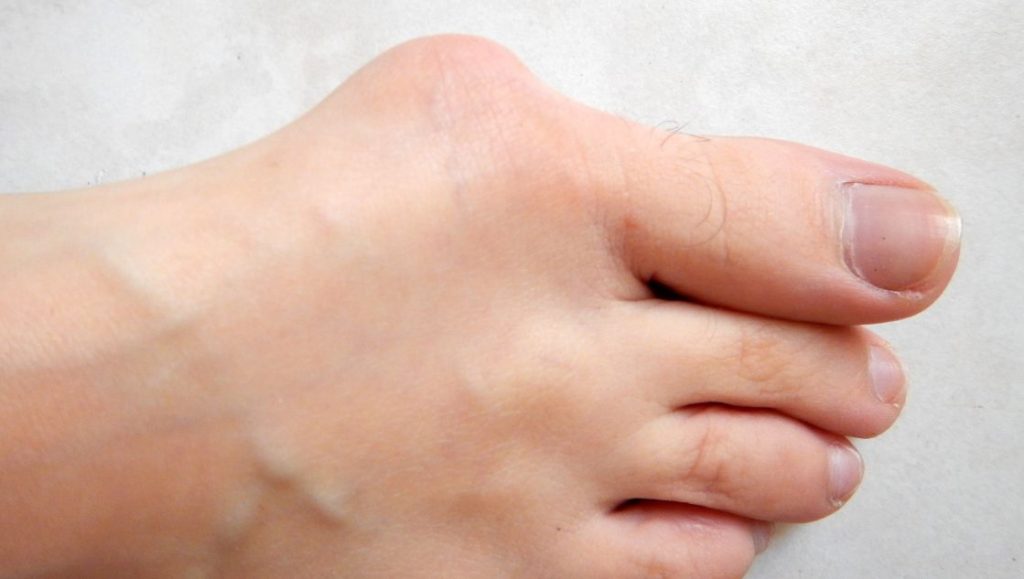COMMON CONDITIONS
Bunion On Foot | Foot Bunion Treatment IN RICHARDSON, DALLAS, GARLAND, WYLIE, MURPHY.
WHAT IS A BUNION?
Even though bunions are a common foot deformity, there are misconceptions about them. Many people may unnecessarily suffer the pain of bunions for years before seeking treatment. A bunion (also referred to as hallux valgus) is often described as a bump on the side of the big toe. But a bunion is more than that. The visible bump actually reflects changes in the bony framework of the front part of the foot. The big toe leans toward the second toe, rather than pointing straight ahead. This throws the bones out of alignment—producing the bunion’s bump. Bunion on foot causes pain in later stages when it becomes chronic.
Bunions are a progressive disorder. They begin with a leaning of the big toe, gradually changing the angle of the bones over the years and slowly producing the characteristic bump, which becomes increasingly prominent. Symptoms usually appear at later stages, although some people never have symptoms.
CAUSES OF BUNION:
There are numerous theories about how bunions grow, yet the specific reason is unknown. Factors likely include:
- Inherited foot type.
- Foot stress or wounds.
- Deformities present at the time of birth.
- Experts disagree on whether tight, high-heeled or too-narrow shoes cause bunions or whether footwear contributes to the development of bunions.
- Bunions may be related with specific kinds of joint pain, especially inflammatory type, for example, rheumatoid arthritis.

SYMPTOMS:
Symptoms, which occur at the site of the bunion, may include:
- Pain or soreness
- Inflammation and redness
- A burning sensation
- Possible numbness
- Symptoms occur most often when wearing shoes that crowd the toes, such as shoes with a tight toe box or high heels. This may explain why women are more likely to have symptoms than men. In addition, spending long periods of time on your feet can aggravate the symptoms of bunions.
RISK FACTORS:
These factors may increase your risk of bunions:
- High heels: Wearing high heels stress your toes into the front of your shoes, often crowding your toes.
- Ill-fitting shoes: Individuals who wear shoes that are too close, too tight or too pointed are bound to develop bunions.
- Rheumatoid arthritis: Having this inflammatory condition can make you bound to develop bunions.
- Heredity: The tendency to develop bunions may be the result of an inherited birth issue with the structure or anatomy of your foot.
BUNION TREATMENT:
Sometimes observation of the bunion is all that is needed. Bunion treatment reduces the chance of damage to the joint, periodic evaluation and x-rays by your surgeon are advised. In many other cases, however, some type of treatment is needed. Early treatments are aimed at easing the pain of bunions, but they will not reverse the deformity itself. Bunion treatments include:
- Changes in shoe wear. Wearing the right kind of shoes is very important. Choose shoes that have a wide toe box and forgo those with pointed toes or high heels, which may aggravate the condition.
- Activity modifications. Avoid activity that causes bunion pain, including standing for long periods of time.
- Medications. Oral nonsteroidal anti-inflammatory drugs (NSAIDs), such as ibuprofen, may be recommended to reduce pain and inflammation.
- Injection therapy. Although rarely used in bunion treatment, injections of corticosteroids may be useful in treating the inflamed bursa (fluid-filled sac located around a joint) sometimes seen with bunions.
- Orthotic devices. In some cases, custom orthotic devices may be provided here at Texas Foot and Ankle Consultants.
INFECTED BUNION TREATMENT:
Bunions usually cause blisters and sores because they rub inside the shoe continuously. If they are left untreated, they lead to severe complications.
WHEN IS SURGERY NEEDED IN BUNION?
If nonsurgical treatments fail to relieve bunion pain and when the pain of a bunion interferes with daily activities, it is time to consider surgical repair. Together we can decide if surgery is best for you.
A variety of surgical procedures is available to treat bunions. The procedures are designed to remove the bump of bone, correct the changes in the bony structure of the foot and correct soft tissue changes that may also have occurred. The goal of surgery is the reduction of pain and deformity.
In selecting the procedure or combination of procedures for your particular case, we will take into consideration the extent of your deformity based on the x-ray findings, your age, your activity level and other factors. The length of the recovery period will vary, depending on the procedure or procedures performed.
You can contact our well-known foot and ankle specialist Dr. Raymond Delpak today for consultation to seek best treatment for your bunion.
SUBSCRIBE TO OUR NEWSLETTER
*for updates on our medical equipment only

